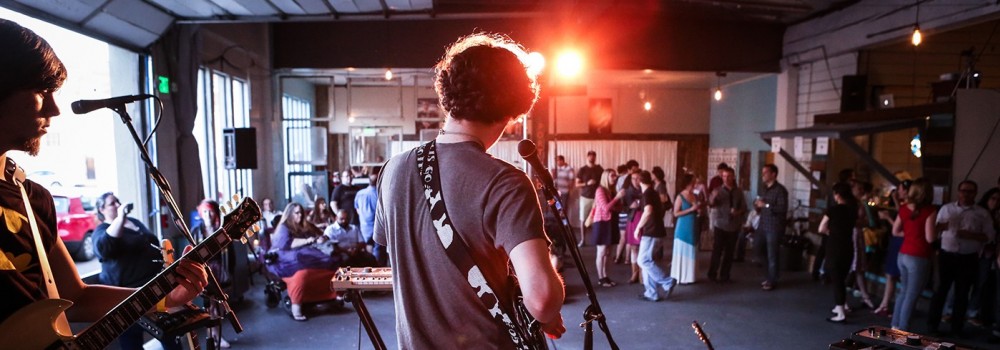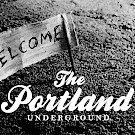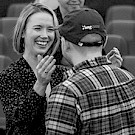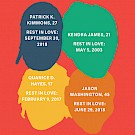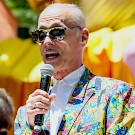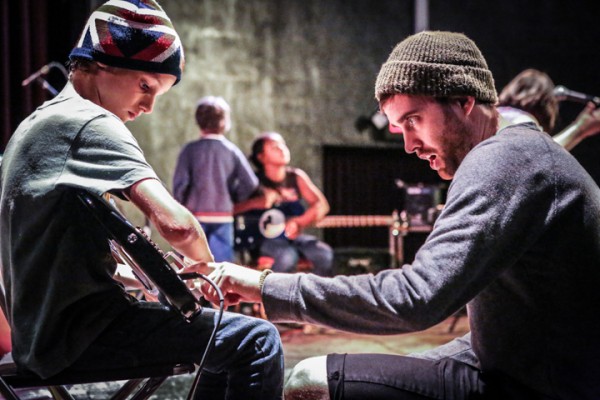 We help youth find and strengthen their own voices by guiding them through their own musical journey. —Ian Mouser of My Voice MusicEducation and music. Two words that are widely defined and very much entwined. For most people, music is an integral part of personal development throughout all stages of life. From infancy to preschool, grade school, high school and adulthood, music surrounds and informs us. Mothers stretch headphones over their round bellies to introduce classical compositions to their budding geniuses and parents sing lullabies to soothe babies to sleep.
We help youth find and strengthen their own voices by guiding them through their own musical journey. —Ian Mouser of My Voice MusicEducation and music. Two words that are widely defined and very much entwined. For most people, music is an integral part of personal development throughout all stages of life. From infancy to preschool, grade school, high school and adulthood, music surrounds and informs us. Mothers stretch headphones over their round bellies to introduce classical compositions to their budding geniuses and parents sing lullabies to soothe babies to sleep.
There’s a natural order to it. Music and singing are important preverbal modes of communication—they give us the building blocks we use for language. Babies play with pitch and tone to make meaning well before using words. We start out simple with the alphabet song and expand the nursery rhymes into “Twinkle Twinkle Little Star” and “Baa, Baa, Black Sheep.” (All three, not coincidentally, have the same simple melody—go ahead, sing them to yourself!) Music exposes children to their native language, to folk stories, and to cultures around the world at a time when they are hungry to learn and just learning to talk. By listening and singing, we learn the mechanics of prosody—the poetic rhythm, syllable stress, and the intonational rise and fall aspects of speech, even if we don’t know or understand the words. If you ever hear a child parrot back a song from the radio in the backseat of a car, you’ll see this theory in action.
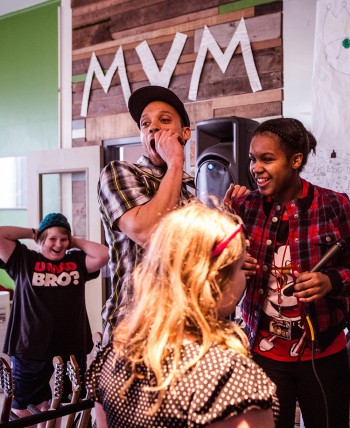 Let’s not forget math. There’s a primary rhythm at work here too. Operationally, all children start out as drummers and music makers. Toddlers love to bang on and shake anything that makes a noise. Introduce them to a xylophone or drum and children will explore their first experiences in sequencing and counting. Give them a cupboard of pots and pans or your car keys and they’re off forming new indie math rock bands.
Let’s not forget math. There’s a primary rhythm at work here too. Operationally, all children start out as drummers and music makers. Toddlers love to bang on and shake anything that makes a noise. Introduce them to a xylophone or drum and children will explore their first experiences in sequencing and counting. Give them a cupboard of pots and pans or your car keys and they’re off forming new indie math rock bands.
Some of the first structured playtime in the classroom involves music, and before children can succeed in language arts and mathematics in our schools, they must learn to socialize and play. If instruments aren’t already part of a child’s household, the school is the first place he or she will get this exposure. But in Portland, our schools are less and less equipped and staffed for music education. The Creative Advocacy Network, an independent Portland-based nonprofit established to increase public understanding about the benefits of local arts education, states that “only 58 percent of Portland elementary schools provide music instruction compared to 94 percent nationally.” Those children who show promise or interest and seek out further instruction for band, orchestra or choir often find themselves in after-school programs, summer camps or paid lessons, if the resources are available.
But what about the schools and families that don’t have the resources? What about the students and young people who don’t have access to music education during the school day? This is the domain of nonprofit music educators in Portland who provide opportunities for children, adolescents and adults to learn, succeed and shine.
Plenty of studies illustrate the connection between studying music and academic achievement, and some key findings were presented in a 2012 National Endowment for the Arts report on achievement in the arts for at-risk youth. Using research gathered by the U.S. Department of Education, the NEA tracked at-risk children, teenagers and young adults who had either high or low levels of arts engagement. The report summarized that students who have access to the arts, whether in or out of school, “tend to have better academic results, better workforce opportunities, higher career goals, and more civic engagement.”
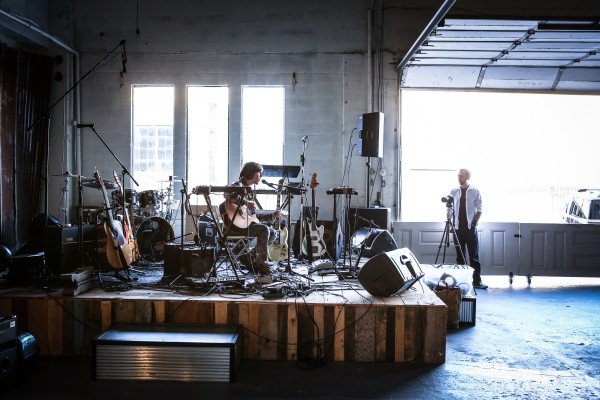 A student performance at My Voice Music’s most recent benefit concert in late MayWe all know how engrossed we get when listening to music, but by performing and creating music, all the senses, memory, muscles, and the intellect are fully engaged. Musicians gain not only focused attention and precision of fine motor skills as they become proficient, they learn collaboration, creative thinking, problem solving, improvisation, and exploration of their emotional and social connections. An analysis that looked at the relationship between involvement in the arts and personal development (using U.S. Department of Education data collected on more than 25,000 secondary school students) revealed that those students who had consistent involvement in instrumental music over the middle and high school years showed “signicantly higher levels of mathematics proficency by grade 12.” This observation holds true regardless of students’ socioeconomic statuses, and disparities between those who are involved in music versus those who are not are more significant over time—proof that not every child needs to become the next classical, jazz or rock star, but ones that participate in music programs do show higher academic achievement scores in reading, science and math.
A student performance at My Voice Music’s most recent benefit concert in late MayWe all know how engrossed we get when listening to music, but by performing and creating music, all the senses, memory, muscles, and the intellect are fully engaged. Musicians gain not only focused attention and precision of fine motor skills as they become proficient, they learn collaboration, creative thinking, problem solving, improvisation, and exploration of their emotional and social connections. An analysis that looked at the relationship between involvement in the arts and personal development (using U.S. Department of Education data collected on more than 25,000 secondary school students) revealed that those students who had consistent involvement in instrumental music over the middle and high school years showed “signicantly higher levels of mathematics proficency by grade 12.” This observation holds true regardless of students’ socioeconomic statuses, and disparities between those who are involved in music versus those who are not are more significant over time—proof that not every child needs to become the next classical, jazz or rock star, but ones that participate in music programs do show higher academic achievement scores in reading, science and math.
Furthermore, a 2013 review of recent literature published in Frontiers In Neuroscience (“How musical training affects cognitive development”) concluded that “musical training uniquely engenders near and far transfer effects, preparing a foundation for a range of skills, and thus fostering cognitive development.” In essence, both formal and nontraditional music education improve cognitive function and abstract thinking and that translates across disciplines.
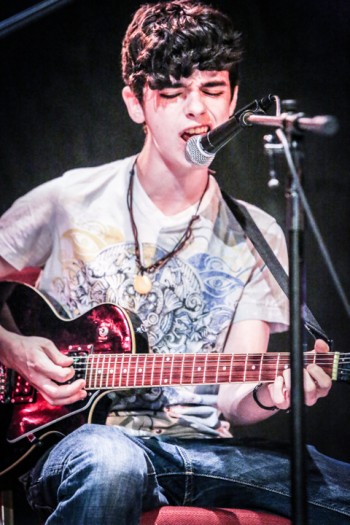 Learning to read music and decode the symbols for notes, tone, pace and placement is not unlike learning language and vocabulary or memorizing formulas and practicing math problems. Students learn about fractions as they relate to their musical knowledge of the relationships between eighth, quarter, half and whole notes and better understand mathematical concepts. If only the systems so focused on implementing Common Core standards and raising test scores would realize the error. Instead of cuts to music programming, an increase in music education might get our students and school districts nearer to those end goals much quicker.
Learning to read music and decode the symbols for notes, tone, pace and placement is not unlike learning language and vocabulary or memorizing formulas and practicing math problems. Students learn about fractions as they relate to their musical knowledge of the relationships between eighth, quarter, half and whole notes and better understand mathematical concepts. If only the systems so focused on implementing Common Core standards and raising test scores would realize the error. Instead of cuts to music programming, an increase in music education might get our students and school districts nearer to those end goals much quicker.
There is a great discrepancy between what may be offered at schools and what students actually receive. This is due in part to the large student-to-teacher ratios as the balance between staffing levels and classroom sizes is an ongoing source of controversy in American schools. Add to that limited instructional resources, instruments, facilities, equipment, and the cost of emerging technologies used to study and create music and there are a host of obstacles. These are also the reasons cited when the availability of music education in the average school breaks down and music programs are some of the first on the chopping block as school budgets tighten.
Portland Public Schools haven’t escaped those cuts despite residents approving a citywide $35 per person Arts Tax. Passed in 2012, the tax aims to restore arts education to elementary schools in six school districts and increase arts access citywide. Portland’s revenue office hasn’t been universally successful in collecting this tax from all Portlanders, resulting in snarls throughout the system. More than one-third of Portland taxpayers still haven’t paid the tax, while court challenges on the issues of income equity in households below the poverty line or those receiving government retirement pensions and social security benefits rages on. These legal battles have pushed the due date twice and triggered a messy refund process. By the time the message kicked in and people attempted to pay the tax, the online payment system collapsed under the crush of last-minute filings.
Here’s where all the administrative acronyms come in. The Arts Oversight Committee (AOC) is a group that evaluates the distribution and implementation of the tax funds to the schools. The AOC’s first report in April 2014 estimated that schools received $6.7 million from the Arts Tax in its first year, money that was earmarked to hire and retain certified arts and music teachers. Money from the Arts Tax was also slated to be distributed by the Regional Arts & Culture Council (RACC) in the form of grant funding to dozens of local arts programs and support for nonprofit arts organizations.
However, per the tax measure, RACC receives funding only after the Arts Tax fulfills its obligations to schools, and it was a widely held belief that RACC would receive a low distribution, and possibly even no distribution of funds during the first year of collection. The report states that the allocated 2013-14 funds of $200,000 to RACC will “likely have a minimal impact” in art groups’ abilities to increase programming and access. That $200,000 total represents a shortfall from the projected goal of operational support RACC promised to grantees. All told, the total number of Portland area nonprofits supported was 44, with the smallest tax grantee awards of $882 going to Pacific Honored Artists, Musicians and Entertainers (PHAME) and NW Documentary and the largest award of $22,138 received by the Portland Art Museum. RACC officials expect to receive approximately $3 million per year once noncompliant Portlanders start paying.
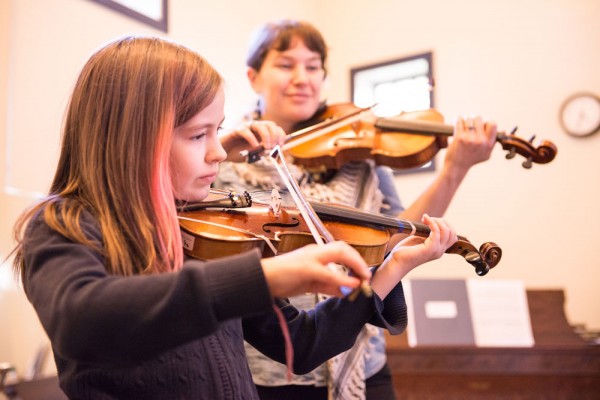 Violin lessons at Ethos: Photo by Nina JohnsonDespite Oregon’s relatively high attendance at arts events, the National Assembly of State Arts Agencies rates our state among the lower third in per capita funding for the arts. Here in Portland, we have our street fairs and art walks from Alberta to Mississippi to the Pearl and beyond. First and Last Thursdays, First Fridays, Third Wednesdays, Fourth Mondays, Any Given Sunday. You get the jist. Give us a day and a street and we’ll make an excuse to throw an art walk. The same goes for music festivals.
Violin lessons at Ethos: Photo by Nina JohnsonDespite Oregon’s relatively high attendance at arts events, the National Assembly of State Arts Agencies rates our state among the lower third in per capita funding for the arts. Here in Portland, we have our street fairs and art walks from Alberta to Mississippi to the Pearl and beyond. First and Last Thursdays, First Fridays, Third Wednesdays, Fourth Mondays, Any Given Sunday. You get the jist. Give us a day and a street and we’ll make an excuse to throw an art walk. The same goes for music festivals.
In a community where we’re aiming to celebrate diversity, one of the earliest and primary ways to do that is in the opportunities that music education offers students for lifelong learning and expression. Music education inclusion is especially important to students with limited access along the barriers of sex, race, age, financial status and ability. It is vital to reach out to those who struggle with financial and cultural poverty as well as including those with disabilities.
The music programming of local Portland nonprofits offers access to help fill in the gaps, pick up the pieces, and put music and education back together again.
The Youth Music Project is a newcomer among local nonprofits. Dave and Sally Bany, owners of Moonstruck Chocolate, imagined and built YMP as a way to give back to the community and expand the availability of music education that was missing in schools. Founded in 2012, YMP offers a supplemental after-school program. In a space that was once a church, its facilities include 20 classrooms, two state-of-the-art recording studios and a performance theater. The Bany’s daughter Rachael, who has recently taken on the role of interim executive director, describes music as “an integral part of student development,” and the proof is shown in both scholastic and social benefits. “We are excited to see many students start performing better in school and getting fewer discipline referrals,” Bany says. “Students are gaining confidence and begin to understand the world around them, how they fit into it, and how they can make it better.”
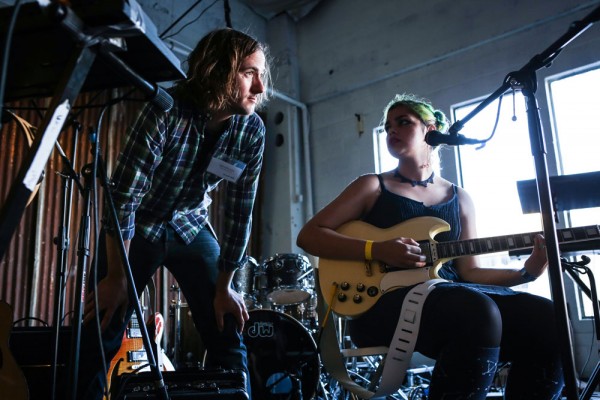 MVM’s Mouser instructing at his organization’s May benefit concertAccess as a means to betterment runs throughout the success stories of local nonprofits. During the 2013-14 school year, Ethos placed nine full-time music educators in the low-income, rural communities of Elkton, Fossil, Condon, Long Creek, Madras, Monument and the Warm Springs Reservation. Erin Sutherland, communications director (and a singer in the vintage swing group The Stolen Sweets), notes, “without Ethos’ involvement, kids living in these isolated and underserved communities would not have had access to the well-documented academic and social benefits of music education.” Like the definition of the Greek word ethos, meaning character, “the organization’s artistic vision is built on the tenet that music education has the transformative power to change thoughts, moods and actions.”
MVM’s Mouser instructing at his organization’s May benefit concertAccess as a means to betterment runs throughout the success stories of local nonprofits. During the 2013-14 school year, Ethos placed nine full-time music educators in the low-income, rural communities of Elkton, Fossil, Condon, Long Creek, Madras, Monument and the Warm Springs Reservation. Erin Sutherland, communications director (and a singer in the vintage swing group The Stolen Sweets), notes, “without Ethos’ involvement, kids living in these isolated and underserved communities would not have had access to the well-documented academic and social benefits of music education.” Like the definition of the Greek word ethos, meaning character, “the organization’s artistic vision is built on the tenet that music education has the transformative power to change thoughts, moods and actions.”
For kids in the corrections system, living in foster care, or in residential mental treatment centers, the deep, transformational power of music as therapy is also evident. Ian Mouser, founder and executive director of My Voice Music, notes the significant dificulties a young, growing nonprofit faces, especially during the peak of the economic crisis, yet MVM has still managed to meet the challenge of helping at-risk and marginalized youth with emotional or behavioral problems. MVM partners with many schools and its programs are focused on individual songwriting and recording projects for students based on their musical genre interests, such as hip-hop, pop and rock. Unlike the schools, most of these exceptional nonprofits’ goals are not necessarily to provide formal music education.
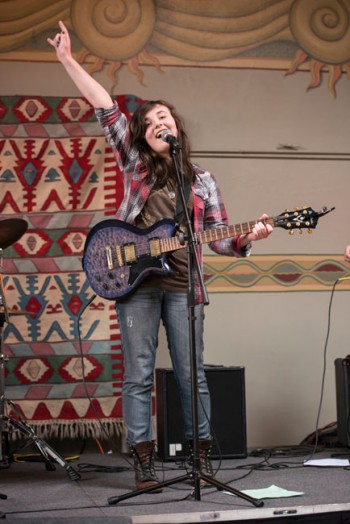 Ethos rock band showcase at the Kennedy School: Photo by Nina Johnson“We help youth find and strengthen their own voices by guiding them through their own musical journey and providing them with pathways to grow as musicians, community members and individuals,” Mouser says. At MVM summer rock camps, nontraditional peer-to-peer lessons are taught by volunteer high schoolers who mentor and teach middle schoolers as a way to incorporate these goals. “Imagine how cool it would be to be a kid and have some older high schooler teach you how to play guitar or drums?” Mouser illustrates.
Ethos rock band showcase at the Kennedy School: Photo by Nina Johnson“We help youth find and strengthen their own voices by guiding them through their own musical journey and providing them with pathways to grow as musicians, community members and individuals,” Mouser says. At MVM summer rock camps, nontraditional peer-to-peer lessons are taught by volunteer high schoolers who mentor and teach middle schoolers as a way to incorporate these goals. “Imagine how cool it would be to be a kid and have some older high schooler teach you how to play guitar or drums?” Mouser illustrates.
Community partners and synergies are already established among these nonprofits, particularly in sharing new teaching strategies for inclusion and accommodation of a wider range of students across the lifespan in underserved populations. PHAME is one such nonprofit organization, dedicated to inspiring individuals with developmental disabilities to lead full, creative lives through arts education and performance.
Executive director Stephen Marc Beaudoin of PHAME, a nonprofit celebrating 30 years in 2014, expands on these interconnections. “Whether it’s PHAME or Ethos or the Youth Music Project, none of our organizations are doing this work in a vacuum,” he says. “Collectively, it seems our aim and vision has much in common—to inspire confidence and build skills in individuals through music and the arts, and to ensure a continuum of arts education opportunities exists outside of the public education realm, from pre-K to 12th grade and for the rest of their lives.”
In exploring the meaningful work and tremendous accomplishments of these nonprofits and the students they serve, several recurring themes and words echo throughout. Voice. Expression. Confidence. Opportunity. Experience. And perhaps the most important: community.
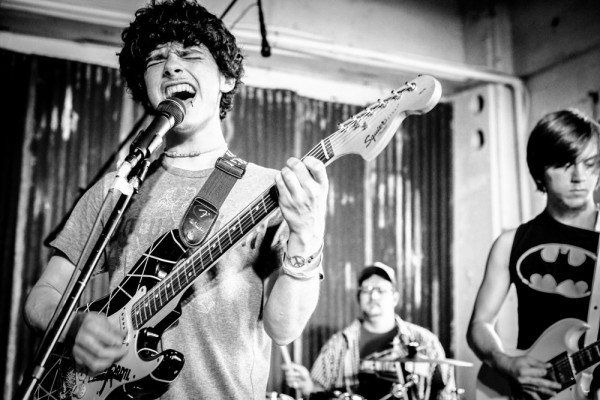 MVM students rock out at the May benefit concertMaking music is more than just making sounds. Education is far more than just taking tests. Music education is not just about learning how to carry a tune—it’s about learning how to carry yourself through life. And it takes a whole community with the dedicated support of local nonprofits that provide the opportunities that enrich our lives and the lives of our children beyond school.
MVM students rock out at the May benefit concertMaking music is more than just making sounds. Education is far more than just taking tests. Music education is not just about learning how to carry a tune—it’s about learning how to carry yourself through life. And it takes a whole community with the dedicated support of local nonprofits that provide the opportunities that enrich our lives and the lives of our children beyond school.

